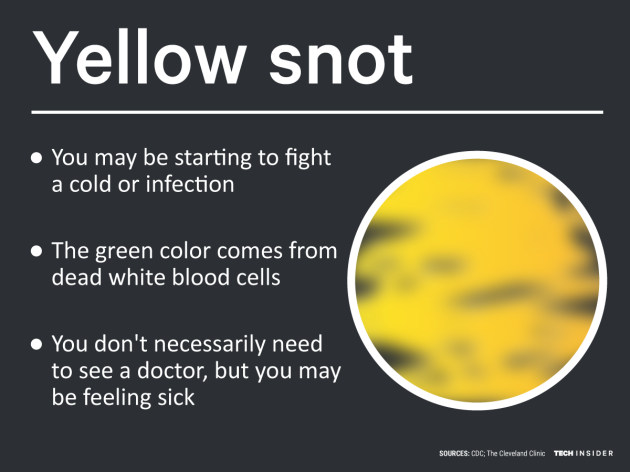Have you ever woken up feeling congested, with a throbbing headache and a runny nose that just won’t quit? You blow your nose, and the expelled mucus is a strange shade of yellow or green. You might be thinking, “Is this normal?”

Image: www.pinterest.com
Sinus infections are common, and the color of your mucus can be a clue to understanding your body’s response to the infection. Let’s dive into the fascinating world of mucus color and decode the messages hidden within.
Understanding the Purpose of Mucus
Before we explore the nuances of sinus infection mucus color, let’s take a moment to appreciate the importance of mucus itself. It’s not simply a sticky substance that clogs your nose. Mucus plays a vital role in protecting our respiratory system. It forms a protective barrier that traps dust, pollen, viruses, and bacteria. Think of it as a sticky, yet powerful, first line of defense against harmful invaders.
The Color Code: What Your Mucus is Trying to Tell You
Now, let’s talk about the color changes in mucus, particularly during a sinus infection. The color is a reflection of the body’s fight against the infection. When your sinuses become inflamed (sinusitis), your body sends white blood cells to the area to fight off the infection. These white blood cells release certain substances that can change the color of your mucus.
Clear Mucus: The Healthy Baseline
Normally, your mucus is clear and thin. This indicates that your sinuses are healthy and functioning properly. When you’re breathing comfortably and your nose isn’t running, consider yourself lucky! Your body is doing a fantastic job at keeping the air you breathe clean and healthy.

Image: www.thejournal.ie
White Mucus: A Sign of Thickening
If your mucus turns white, this might be a sign that the mucus is becoming thicker. While not always a cause for concern, it can indicate that your body is working to fight off an infection. The thicker consistency can help trap more bacteria and prevent them from traveling further into your respiratory system.
Yellow Mucus: The Sign of Inflammatory Action
Yellow mucus is often a sign of active infection. The yellow color comes from white blood cells, particularly neutrophils, fighting off the infection. When these neutrophils release their contents to attack bacteria, the color can change. It’s a sign of your body working hard, but remember, that doesn’t mean you should ignore it.
Green Mucus: A Deeper Dive into the Battle
Green mucus is usually associated with a longer-lasting infection. As the infection continues, more dead neutrophils and other cellular debris accumulate in the mucus, giving it that signature green hue. Green mucus can also indicate the presence of certain bacteria, such as Streptococcus pneumoniae, a common culprit in sinus infections.
Brown Mucus: A Signal of Dried Blood
Brown mucus is a bit more concerning and could indicate the presence of dried blood. This can happen if the inflammation in your sinuses is severe or if you have a nosebleed. While not always a serious issue, it’s essential to consult with a healthcare professional to rule out any underlying causes.
Blood in Mucus: A Red Flag
Finding blood in your mucus is never a good sign. It could indicate a more serious underlying condition, such as a nasal polyp, a tumor, or even a more severe infection. If you notice blood in your mucus, it’s crucial to seek medical attention right away.
Orange Mucus: A Less Common Indication
Orange mucus is a less common sight and is usually associated with the presence of orange-colored fungi or bacteria. While less frequent, it’s an indication that something unusual is happening in your sinuses, and consulting a doctor is always the safest course of action.
When to Seek Medical Help
If your sinus infection persists for more than 10 days, your mucus is thick, green, or brown, you have fever, facial pain, or facial swelling, it’s essential to see a doctor. Sinus infections can worsen or lead to complications if left untreated.
Expert Insights and Actionable Tips
Dr. Emily Jones, a renowned otolaryngologist (ENT), emphasizes the importance of staying hydrated during a sinus infection. “Plenty of fluids help thin out the mucus, making it easier to drain,” she says. She also recommends using a saline nasal spray to clear out the nasal passages and using a humidifier to add moisture to the air, further easing congestion.
What Color Is Mucus With Sinus Infection
Conclusion
The color of your mucus can be a valuable indicator of your body’s response to a sinus infection. Understanding the significance of different colors can help you make informed decisions about your health. Remember, if you’re concerned about your symptoms, don’t hesitate to consult with a healthcare professional. They can accurately diagnose the cause of your sinus infection and recommend the appropriate treatment plan.





